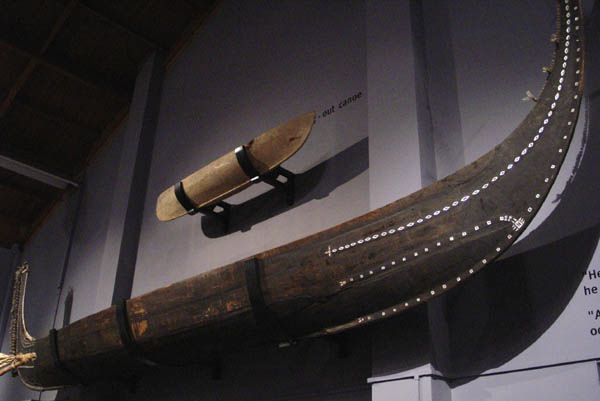In March 1967, master carver Reverend Job Rotoava began a 13-month labour of love to create this magnificent scale model tomoko (war canoe). In his small workshop in the village of Sasamunga, located on the south coast of Choiseul in the Solomon Islands, Rotoava expertly crafted and caulked the 7.5 metre vessel with the intermittent help of 22 local men.

Tomoko have long been admired for their striking appearance. Historically associated with headhunting expeditions, larger vessels measured some 15.5 metres in length and had the capacity to seat up to 35 crew – a sure means of stoking fear among enemy tribes.
This tomoko is stained black with dye extracted from the nut of the tita tree and features 1,053 individually shaped nautilus shell inlays, each affixed with putty derived from crushed Parinarium nut kernels. The arrangement of the inlays depict conventional motifs including boboe seeds, bracelets, earwigs, fish jawbones, flying birds, horizon clouds and mango stones.
At the prow, positioned at the waterline, sits a highly stylised anthropomorphic figure whose facial patterning is reminiscent of designs worn by ancestral warriors. Representing a mythological spirit, the bust acts as a warden against kesoko (dangerous sea spirits) to ensure safe and successful travels.
Rotoava named the tomoko Sareviala in honour of his grandfather, who was himself a famous carver. When presenting the model to Canterbury Museum, Rotoava noted that the vessel was "a memorial to those who lived long ago and a way to remember them".





